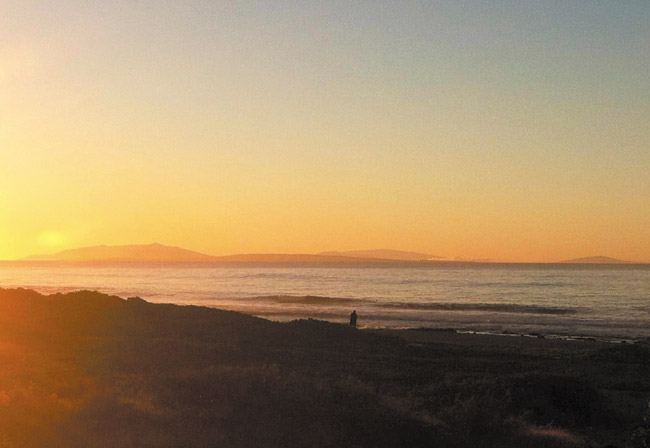Can You See Hawaii Island?
The recent string of hot and humid days has made life miserable for most of us. But in the midst of all the mugginess has been a silver lining that many have enjoyed.
Light winds and clear skies have contributed to amazing views off East Oahu. There are days when Molokai appears so close, it’s as if you can almost touch the Friendly Isle.
“It certainly has something to do with the way human perception works,” says Paul Sherard, assistant professor of physics at Honolulu Community College. “We think of things more ‘in focus’ to be closer and distant objects hard to make out, which we interpret as ‘out of focus’ because they are hard to see. On a clear day, distant objects such as the cliffs of Molokai come into sharp focus, and thus appear closer. On normal days, the cliffs of Molokai may be visible but seem ‘out of focus’ because they are difficult to see, and thus appear farther away.”
But how far can the naked eye really see?
It’s a question people have been asking for years, especially on those days when you can see Molokai, Lanai and even Maui from Oahu.
“Yes, on even a semi-clear day Molokai and Lanai can be seen,” confirms Sherard. “Finding Lanai under these conditions can be challenging. You need to know where to look, to the right of Molokai. On a very clear day, Maui can be seen rising above the cliffs of Molokai, to the right. When you see Maui, what you are really seeing is Haleakala rising above the horizon. The lower portion of Maui, such as Kihei, is blocked from view by the cliffs of Molokai.”
According to Sherard, the distances from Halona Blowhole to the peaks and cliffs on Molokai, Lanai, Maui and Hawaii island are anywhere from 27 to 183 miles.
* Molokai cliffs: 27 miles away
* Molokai peak: 54 miles away
* Lanai peak: 61 miles away
* Haleakala: 100 miles away
* Mauna Kea: 175 miles away
* Mauna Loa: 183 miles away
Which begs the question: Is it even possible to see Mauna Loa and Mauna Kea from Oahu? Many insist they can!
Sherard says otherwise. “No, even on the clearest of days, not even the peaks of Mauna Loa and Mauna Kea are visible,” he says with emphasis.
Sherard explains there are two basic reasons for this, including something we all learned in elementary school.
“We all know the earth is round and because of the curvature of the earth, objects at very large distances begin to fall below the horizon,” he says. “The most distant objects visible are usually peaks of large mountains. Despite the tremendous heights of Mauna Kea and Mauna Loa, they still are actually below the horizon because of their vast distance from East Oahu.”
Sherard says math proves his point.
“I have verified this fact from a mathematical formula that calculates how far above or below an object is, based on its elevation and distance from the observer,” he explains. “These calculations indicate that Mauna Kea and Mauna Loa are just below the horizon as viewed from East Oahu and therefore never can be seen, even under the best viewing conditions.”
Sherard adds that visibility also plays a role in what we see and cannot see. He says air thickness is relatively high near sea level.
“There is a limit as to how far you can see even under the best of viewing conditions because of the scattering of light by the atmosphere,” he explains. “This is why distant mountains often look pale white. For distance peaks beyond 100 miles, the viewing becomes worse to the point they are unviewable.”
So there you have it.
To learn more about Sherard’s work, visit his personal Web page: hyperdimensionalspace.com.
rkmizutani@ gmail.com






